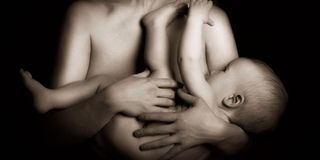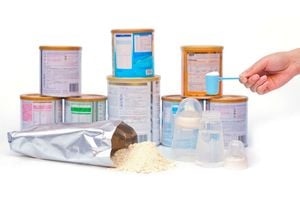Breast lumps: Causes and how to prevent them

A blocked milk duct can cause a breast lump during breastfeeding.
What you need to know:
- A breast lump is an abnormal mass that may develop in the breast.
- Breast lumps are common in women who are breastfeeding
One of the most common questions that new mothers have is whether they should be concerned about breast lumps. Lumps are common in breastfeeding women, but that doesn't mean they are always benign.
A breast lump is an abnormal mass that may develop in the breast. Breast lumps can appear in men, and in women who are not breastfeeding. However, they are most common in women who are breastfeeding.
Here are some of the causes of breast lumps in breastfeeding women
Breast engorgement
Breast engorgement is a condition that can occur when a woman's breast tissue is overloaded with milk. This can happen when a woman produces too much milk, is unable to breastfeed often enough, or has recently stopped breastfeeding.
When breast engorgement occurs, the breast tissue can become swollen and firm, and it may even feel hot to the touch.
In some cases, breast engorgement can cause breast lumps. These lumps are usually benign, but they can be uncomfortable and may make breastfeeding difficult.
If you are experiencing breast engorgement for an extended period, it is important to seek medical advice from a healthcare professional to avoid mastitis.
Blocked milk duct
A blocked milk duct can cause a breast lump during breastfeeding. The ducts are the tubes that carry milk from the breast to the nipple.
When they are blocked, the milk cannot flow freely and can flow back up, causing a breast lump. A blocked milk duct could result from poor latching, tight clothing, or irregular breastfeeding.
If you have a blocked milk duct, you may notice that the lump is tender or sore. In addition, there could be a blister around the nipple.
A blocked milk duct could cause mastitis, so it is important to get checked if it persists.
Mastitis
Mastitis is an infection of the breast tissue that can cause a breast lump. It is most common in women who are breastfeeding, but it can also occur in women who are not breastfeeding.
Mastitis usually occurs when a woman has a blocked milk duct or engorgement. Symptoms of mastitis include pain, inflammation, redness, and warmth in the affected breast. In some cases, mastitis can also cause fever.
If you think you might have mastitis, it is important to see a healthcare professional as soon as possible.
Abscess
An abscess is a collection of pus that can occur in the breast tissue. Though rare, an abscess can develop in the breast during breastfeeding.
An abscess can be caused by a blocked milk duct or mastitis. The symptoms of an abscess include pain, redness, and warmth in the affected breast. Consult a doctor if you have an abscess.
How to relieve breast lumps at home
- Apply a warm compress to the affected area for 15-20 minutes several times a day. This can help to reduce inflammation and pain.
- Try massaging the lump with your fingers. This may help to break up any clogged milk ducts.
- Make sure you are wearing a well-fitting bra. A poorly fitting bra can contribute to breast engorgement and blocked milk ducts.
- Try to nurse often. This will help to empty the breast and reduce engorgement.
- If you cannot nurse, express milk by hand or with a pump. This will also help to reduce engorgement.
When to see a healthcare professional
- You have a fever.
- The lump is rigid and does not get smaller after a few days.
- You have redness, warmth, or pain in your breast that is getting worse.
- You have pus or blood coming from your nipple.
- You are experiencing flu-like symptoms such as fatigue or body aches.
- You think you may have an abscess.
Breast lumps are common and usually benign, but it is essential to see a healthcare professional if you are experiencing any symptoms that concern you. With proper treatment, most breast lumps will go away on their own. However, if left untreated, some breast lumps can lead to more severe problems, such as mastitis or an abscess.




